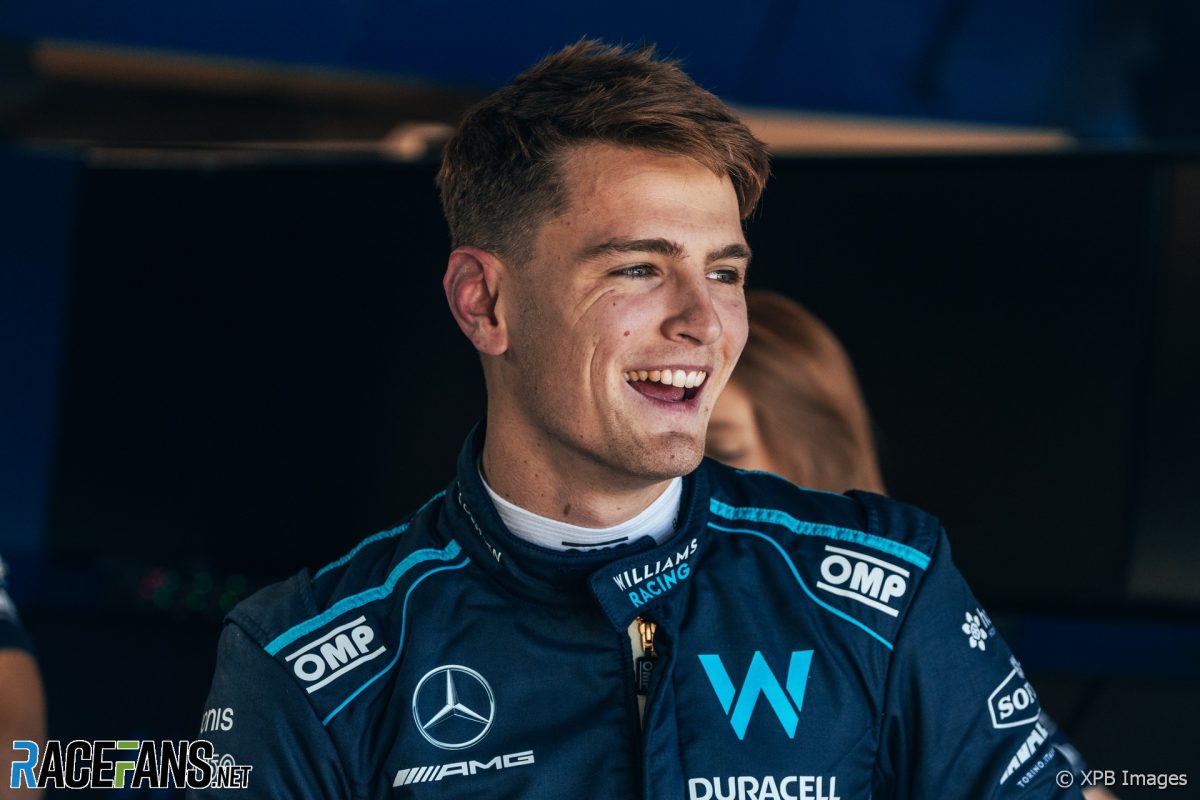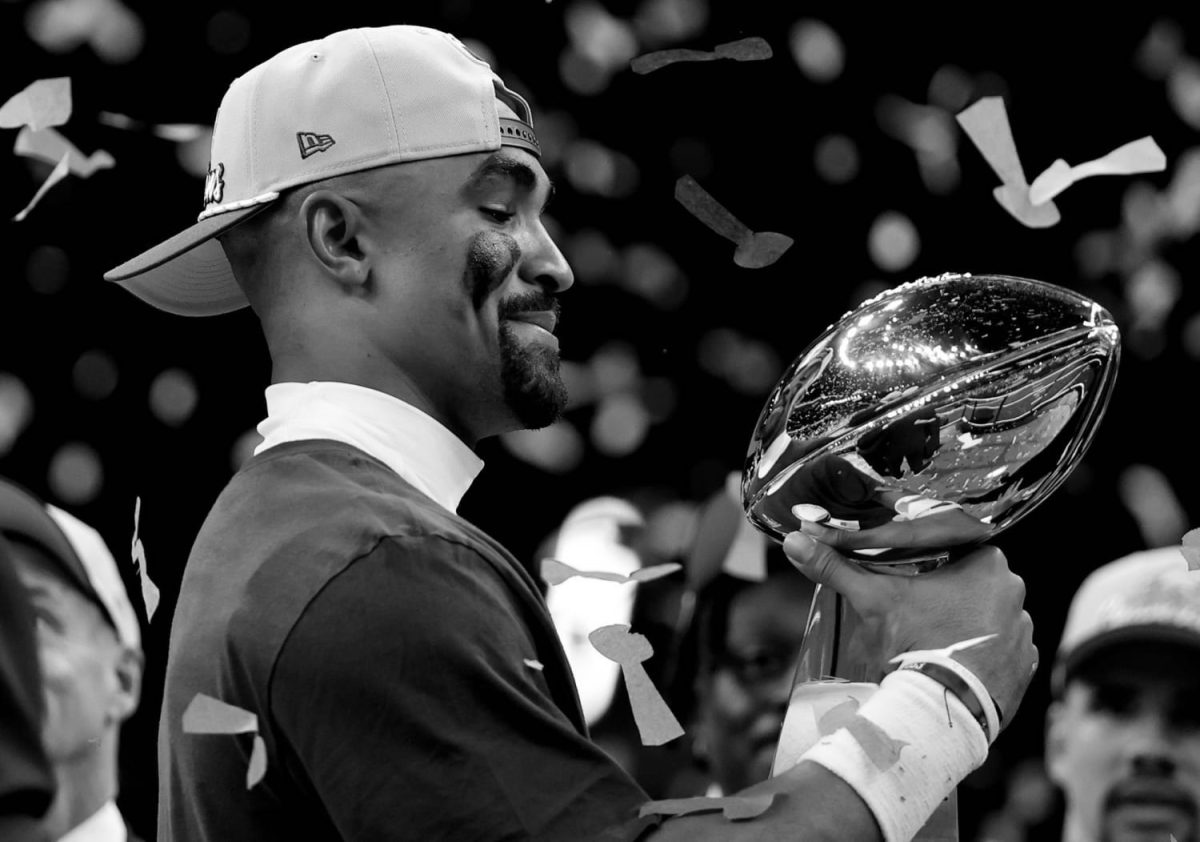The Formula 1 season is about to start with its first race this Saturday, March 2, on Bahrain’s International Circuit. This past week was preseason testing, which is an opportunity for teams to put their cars on the track before the first race of the season; teams race one car per day for the three days. One of my favorite teams in the sport is Williams Racing, who has historically been strong but is currently making its way back up in the field after some lows. Since I follow Williams across social media, I received an email to apply for a spot in a Q&A with second-year Williams driver Logan Sargeant, and to my surprise, I won the spot.
Sargeant is the first American F1 driver since Alexander Rossi in 2015. Rossi didn’t even complete a season; he only drove for five races before going to the IndyCar Series in the U.S., making Sargeant the first American to race for a full season since Scott Speed in 2006. Sargeant’s entrance into F1 is impressive due to the sport being European-dominated. In the current grid, nine out of the 20 drivers are from countries outside of Europe, and only a handful of F1 champions have been from countries outside of Europe like Brazil, Argentina, Australia, South Africa, New Zealand, Canada, and the U.S. In the history of F1, there have only been two American champions, Phil Hill in 1961 and Mario Andretti in 1978.
Sargeant is originally from Fort Lauderdale, FL. Like most F1 drivers, he started racing in karting. He won the World Junior Karting Championship in 2015 in Abu Dhabi. He then moved to one of the lower categories of F1 in the Formula 4 United Arab Emirates series, then onto British Formula 4. He then made the jump to the first official Formula 1 subcategory, Formula 3, where he spent three years with Carlin Motorsport. Finally, in 2022 he moved to Formula 2 with Carlin where he continued to impress, eventually joining the Williams Driver Academy. He had impressive results which ultimately won him a spot alongside Alexander Albon in Williams Racing for 2023.
In the Q&A, Sargeant was first asked what goes through his mind when the lights go out. In F1, the cars line up in the spots they qualify for and wait until all the lights go out to start racing. It is a challenging moment to time because the drivers have to react to exactly when the lights will go out to get a good start. For Sargeant, it’s the best moment of any race because of the adrenaline rush; when he can feel and hear all 20 engines revving, waiting to start the race, he does not worry about anything else but himself and his reaction time.
Sargeant’s rookie season last year had ups and downs. He ended up with only one point in the championship, in part because he had to race with a car that started poorly. However, towards the end of the season he managed to receive some upgrades, and the team gained places to finish seventh out of 10 — a big improvement from last place in 2022. Sargeant mentioned qualifying in Las Vegas when the team was able to lock out the third row and getting double points in the U.S. Grand Prix as highlights of the season.
In Las Vegas, both Albon and Sargeant managed to put their cars in fifth and sixth position following the penalty of Carlos Sainz from second to last, which pushed them up the starting order. However, the team wasn’t able to convert those positions into points in Sunday’s race, coming in 12th and 16th.
Last year was the third season in which a single country held three Grand Prix. The U.S. hosted the Miami GP, the U.S. GP (Austin), and the Las Vegas GP, which shows the significant growth of the sport’s popularity in the U.S. However, the U.S. has other circuits, not F1 related, that drivers dream to race in. But even as F1’s popularity grows in the U.S., it is still centered in Europe. Legendary tracks like Monaco, Monza in Italy, Spa in Belgium, or even Silverstone in the UK are still the favorites for drivers.
Much of the newfound popularity the sport is gaining can be attributed to Netflix’s documentary of each season of F1, Drive to Survive. There are new drivers and teams featured every season, and the show interviews team bosses, drivers, and F1 journalists to create a behind-the-scenes feel for the audience. Although fans and drivers have complained that the show creates too much drama, Drive to Survive makes it enjoyable to follow a season with digestible episodes instead of viewing a two-hour race every week.
Sargeant, like many other drivers, had certain opinions about Drive to Survive.
Many drivers have shown appreciation for the popularity it has brought to the sport; however, some remain skeptical, saying it has brought much more of a show feeling to F1 than that of an actual sport. Though he makes few appearances in the season, he is content after being accustomed to seeing boom mics everywhere.
My theory is that the show has been able to change peoples’ perspectives about motorsport, including mine. I used to think it was just cars going around in circles and that the one person who always won just had the best car in the grid. However, the show did an incredible job of showing viewers how intricate Formula 1 is — how the racers depend on teams of hundreds of workers who build, design, and test the cars, and how strategy is as important as the driving itself.
It’s no surprise that the show generated both massive monetary returns and audience growth. The F1 season is about to start, which means that the Netflix crews are already filming Season 7 within the Paddock. The season will cover 24 races, and the growth of popularity that will come from it will continue to impress.











